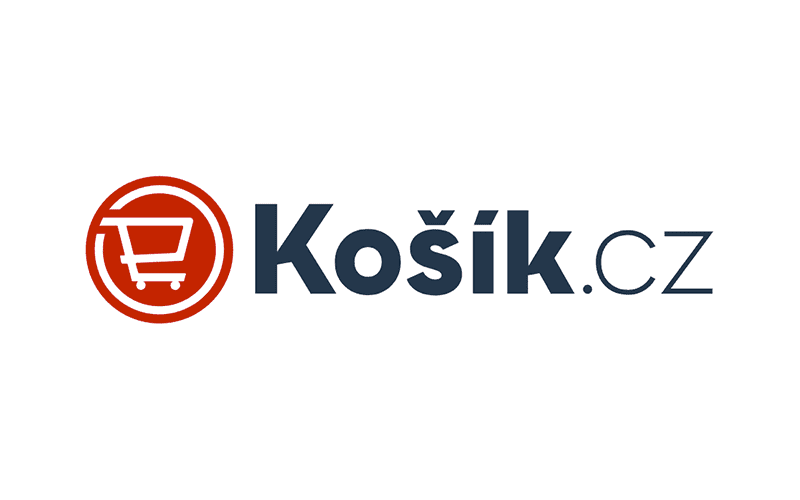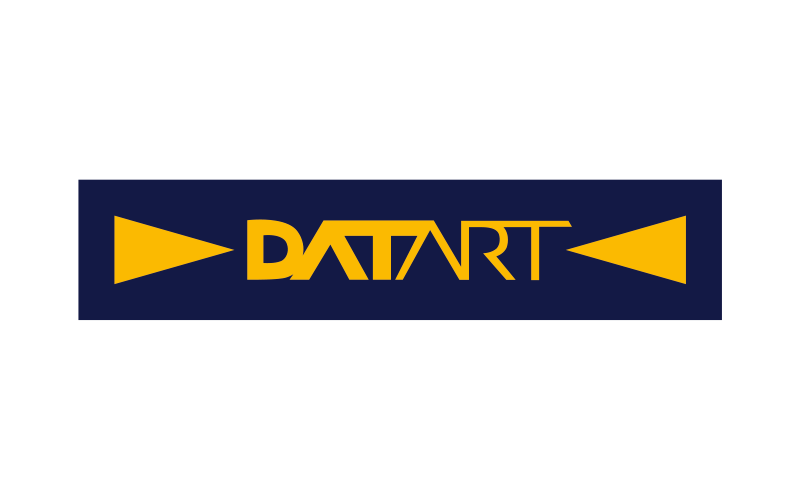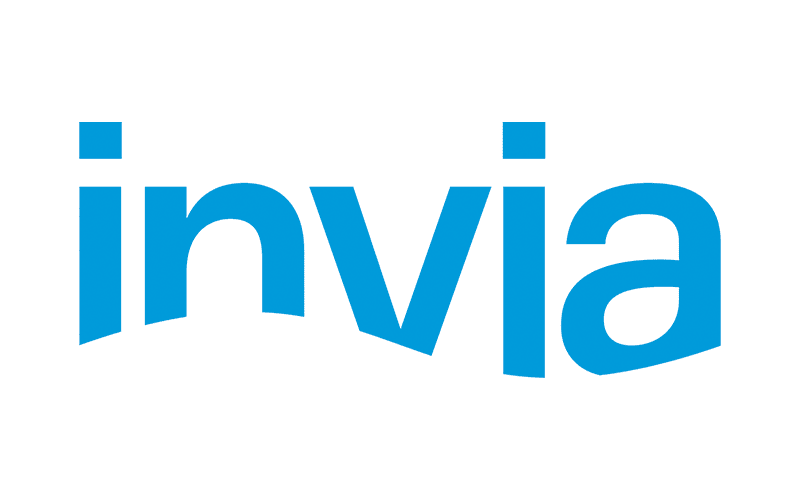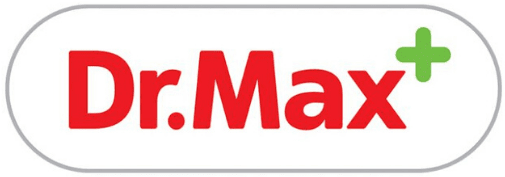Visualization and analyzing
Explore data patterns and gain insights for improved marketing performance
How Does Data Visualization improve your decisions?
Visualization and Analysis transforms raw data into compelling visuals, empowering users to uncover insights, identify patterns, and make informed decisions. Through various techniques and tools, this approach offers an intuitive exploration of complex information, combining visualization with data analysis for a comprehensive understanding and better decision-making.
Why focus on
visualization and analyzing
1
Clear
reporting
Build visually comprehensive data reporting, ready for daily usage
2
Identifying
anomalies
Analysis spots outliers and anomalies - both for repair, or for fast exploring interesting insights.
3
Comparative and predictive analysis
Compare different datasets easily, predict the results of your decisions
Key* Components of Visualization and analyzing
Key components of visualization and analysis encompass a range of essential elements, such as diverse visualization techniques like charts and graphs, interactive dashboards facilitating data exploration, data preprocessing to ensure data quality, statistical analysis for deeper insights, data storytelling to communicate findings effectively, data integration for comprehensive views, user-centric design to enhance user experience, robust data security measures, and an iterative approach to explore data thoroughly.
Solution
details & steps
Visual layout design for reporting refers to the process of arranging and presenting information in a visually appealing and organized manner within a report. It involves carefully structuring the layout, selecting appropriate fonts, colors, and graphics, and incorporating effective data visualization techniques to enhance readability, comprehension, and engagement.
The goal of visual layout design is to present complex data and information in a clear and concise manner, enabling readers to quickly grasp key insights and findings. By employing visual hierarchy, balance, and consistency, the design enhances the overall user experience and facilitates effective communication of data-driven insights.
Key elements of visual layout design for reporting include:
Clear Structure: The report should have a clear and logical structure, with sections, subheadings, and bullet points used to guide readers through the content. The layout should be intuitive, ensuring that readers can easily navigate and locate specific information within the report.
Consistent Formatting: Consistency in font choices, font sizes, spacing, and alignment helps create a cohesive and professional-looking report. Consistent use of formatting elements enhances readability and enables readers to focus on the content without being distracted by inconsistent styling.
Effective Data Visualization: Data visualization techniques, such as charts, graphs, and infographics, should be used to present data in a visually compelling and informative manner. Selecting appropriate visualization types based on the data and the insights to be conveyed ensures that the information is effectively communicated and understood by readers.
Color and Contrast: Strategic use of colors can help draw attention to important information, highlight key findings, and create visual interest. The color scheme should be chosen carefully to ensure readability and accessibility. High contrast between text and background is important to ensure legibility, especially for readers with visual impairments.
White Space and Balance: White space, or the empty space around elements, helps create visual breathing room and improves readability. A balanced layout, with appropriate spacing and alignment, ensures that the report appears visually appealing and professional.
Challenges
Information Overload and Clutter:
One of the main challenges in visual layout design is managing the amount of information to be presented within the report. Reports often contain a vast amount of data, insights, and supporting details, which can lead to information overload. Balancing the need to provide comprehensive information with the risk of overwhelming the reader requires careful consideration. Ensuring that the layout is not cluttered and that the most important information stands out can be a challenge.
Simplifying Complex Concepts:
Presenting complex concepts or intricate data in a visually comprehensible way is another challenge. Reports may include technical information, statistical analysis, or complex relationships that need to be simplified and visualized effectively. Transforming complex data into intuitive and easily understandable visualizations, charts, or diagrams can be a demanding task, requiring a deep understanding of the data and the target audience.Ensuring Visual Consistency and Accessibility:
Designing a visually appealing and consistent layout while maintaining accessibility is a significant challenge. Consistency in font usage, color schemes, and visual elements across the report helps create a cohesive and professional look. However, achieving consistency while considering accessibility requirements, such as color contrast for readability or alternative text for visual elements, can be challenging. Ensuring that the visual layout is accessible to readers with disabilities and meets accessibility guidelines is essential but requires careful attention to detail.Balancing Aesthetics and Functionality:
Finding the right balance between aesthetics and functionality is crucial. While an aesthetically pleasing design can enhance engagement, it should not compromise the clarity and readability of the information. Striking the right balance between visual appeal and functional effectiveness can be challenging, as visual elements should not overshadow or distract from the primary purpose of the report, which is to communicate data-driven insights effectively.
Benefits
Improved Readability:
Well-designed visual layouts enhance readability and comprehension, making it easier for readers to understand and interpret the information presented in the report.Enhanced Engagement:
Engaging visual layouts capture readers' attention and maintain their interest throughout the report. This leads to improved engagement and increased retention of key information.Clear Communication of Insights:
By employing effective visual elements, the design facilitates the communication of data-driven insights in a concise and impactful manner. Visual layouts help highlight key findings and enable readers to quickly grasp the main takeaways from the report.
Reporting building refers to the process of creating structured and informative reports that present data, insights, and key findings in a clear and concise manner. It involves gathering and organizing data, analyzing the information, and transforming it into meaningful visualizations, tables, and narratives that effectively communicate the intended message.
The objective of reporting building is to deliver accurate and relevant information to stakeholders, enabling them to make informed decisions and take appropriate actions. Reports serve as a means of summarizing and presenting data in a structured format, allowing stakeholders to understand trends, identify patterns, and assess performance against goals or benchmarks.
Challenges
Data Quality and Accuracy:
Ensuring data quality and accuracy is a significant challenge in reporting building. Data from various sources may have inconsistencies, missing values, or errors that can impact the integrity and reliability of the report. Gathering, cleaning, and validating the data requires careful attention to detail and robust data quality assurance processes to ensure accurate and trustworthy reporting.Data Integration and Complexity:
Integrating data from multiple sources can be complex, especially when dealing with diverse data formats, structures, and systems. Harmonizing and consolidating data from different sources while maintaining data integrity can be challenging. Connecting data from various departments or systems requires understanding the data relationships and establishing appropriate data integration processes.Report Design and Visualization:
Designing reports that effectively communicate insights and engage stakeholders can be a challenge. Choosing the right visualizations, layout, and narrative structure to present complex data in a clear and concise manner requires a balance between simplicity and comprehensiveness. Ensuring that the report design aligns with the audience's needs, preferences, and technical expertise is crucial for successful communication of the information.Timeliness and Automation:
Producing reports in a timely manner can be challenging, especially when dealing with large datasets or frequent updates. Manual data extraction, transformation, and report generation processes can be time-consuming and prone to errors. Automating the reporting process through data integration, advanced analytics tools, and reporting software can help streamline the process and ensure timely delivery of reports.
Benefits
Informed Decision-Making:
Well-built reports provide stakeholders with accurate and relevant information, enabling them to make data-driven decisions based on insights and analysis.Performance Tracking and Evaluation:
Reports allow for the monitoring of performance against targets, goals, or benchmarks. They provide a comprehensive overview of key metrics and trends, facilitating evaluation and improvement of business strategies and operations.Effective Communication:
Reports serve as a means of effectively communicating complex data and insights to diverse stakeholders. They provide a standardized format that conveys information in a clear and concise manner, ensuring a common understanding across the organization
Reporting accuracy validation refers to the process of verifying the correctness and reliability of data and information presented in a report. It involves assessing the accuracy, completeness, and consistency of the reported data to ensure that the information provided is trustworthy and aligned with the intended purpose.
The objective of reporting accuracy validation is to identify and address any potential errors, discrepancies, or misleading information in the report. It aims to ensure that the data used for reporting is accurate, reliable, and free from bias, enabling stakeholders to make informed decisions based on trustworthy information.
By conducting thorough reporting accuracy validation, organizations can ensure the accuracy and integrity of their reported data. This helps build trust, support data-driven decision-making, and maintain compliance with regulatory standards.
Challenges
Data Inconsistencies and Incompleteness:
Dealing with data inconsistencies and incompleteness can be a significant challenge in reporting accuracy validation. Data from different sources may have variations in formatting, units of measurement, or data definitions, leading to inconsistencies when combined for reporting purposes. Incomplete or missing data can further complicate accuracy validation efforts, requiring data analysts to fill in the gaps or make assumptions.
Data Quality and Reliability:
Ensuring the quality and reliability of the data used in reporting is another challenge. Data may be subject to errors, inaccuracies, or biases, either due to data entry mistakes, technical issues, or limitations in data collection methods. Validating the accuracy and reliability of the data requires thorough data cleansing, data quality checks, and an understanding of the data sources and collection processes.Complex Data Transformations and Calculations:
Reports often involve complex data transformations and calculations to derive meaningful insights and indicators. These transformations may include aggregations, statistical calculations, or formula-based calculations. Validating the accuracy of these transformations and calculations can be challenging, especially when dealing with large datasets or complex formulas. Ensuring that the logic and rules used in the calculations are correctly implemented and aligned with business requirements is crucial.Time Constraints and Data Volume:
Reporting accuracy validation can become challenging when there are time constraints or a large volume of data to be validated. Limited timeframes for reporting cycles may leave limited time for thorough validation, increasing the risk of overlooking errors or inconsistencies. Managing and validating large volumes of data within tight deadlines requires efficient data validation processes, automation tools, and a balance between speed and accuracy.
Addressing these challenges requires attention to detail, robust data management practices, and effective collaboration between data analysts, subject matter experts, and data owners. Implementing data quality checks, leveraging data validation tools and techniques, and maintaining clear documentation of data sources and transformations can help overcome these challenges and improve the accuracy and reliability of reporting.
Benefits
Trustworthy Decision-Making:
Validating the accuracy of reported data ensures that stakeholders can make informed decisions based on reliable and trustworthy information. It enhances confidence in the data and reduces the risk of making incorrect or misguided decisions.Improved Data Quality:
By identifying and addressing data inconsistencies, errors, or biases, reporting accuracy validation contributes to improved overall data quality. It helps organizations maintain accurate and reliable data that can be used for various reporting and analytical purposes.Compliance and Accountability:
Reporting accuracy validation is essential for compliance with regulatory requirements and industry standards. It demonstrates accountability and ensures that organizations provide accurate and transparent information to stakeholders, regulatory bodies, or auditors.
Data storytelling refers to the practice of presenting and communicating data-driven insights and findings in a narrative format that engages and resonates with the audience. It involves combining data, visualizations, and storytelling techniques to convey a compelling and meaningful story using data.
The objective of data storytelling is to transform raw data into a narrative that is easy to understand, relatable, and impactful. By using storytelling techniques, such as character development, plot progression, and emotional connection, data storytelling aims to create a memorable and persuasive narrative that drives understanding, decision-making, and action.
By incorporating data storytelling techniques into data analysis and reporting, organizations can go beyond raw data and effectively communicate insights and findings to a wider audience. Data storytelling helps drive understanding, engagement, and action by creating narratives that connect people with data in a meaningful and memorable way.
Challenges
Data Interpretation and Contextualization:
Interpreting and contextualizing data is a critical challenge in data storytelling. Data can be complex and multidimensional, requiring careful analysis and understanding to derive meaningful insights. Ensuring that the data is interpreted correctly and placed within the appropriate context is crucial for telling an accurate and impactful data story. It involves making connections between data points, identifying patterns or trends, and providing relevant background information to support the narrative.Simplifying Complex Concepts:
Simplifying complex concepts and technical details while maintaining accuracy can be a challenge in data storytelling. Some data-driven insights may involve intricate statistical analysis or sophisticated algorithms that are difficult to explain to a non-technical audience. Striking the right balance between simplifying complex concepts and maintaining the integrity of the data requires effective communication skills and the ability to translate technical jargon into understandable terms.Audience Relevance and Engagement:
Ensuring that the data story resonates with the intended audience and keeps them engaged is a significant challenge. Different audiences have varying levels of familiarity with data and different interests or priorities. Tailoring the data story to the audience's needs, interests, and knowledge level is crucial for capturing their attention and maintaining engagement. Finding the right balance between presenting relevant data, using compelling visuals, and incorporating storytelling techniques that resonate with the audience is essential.Ethical Considerations and Data Privacy:
Data storytelling also involves navigating ethical considerations and data privacy concerns. Ensuring that data is used responsibly and that privacy regulations are followed is essential. Handling sensitive or personally identifiable information appropriately and ensuring that data is anonymized or aggregated when necessary requires careful attention and adherence to data governance principles.
Benefits
Improved Understanding:
Data storytelling makes complex data and insights more accessible and understandable. By presenting data in a narrative format, it helps the audience grasp the key message, insights, and implications more easily.Enhanced Engagement:
Storytelling techniques evoke emotions, capture attention, and engage the audience on an intellectual and emotional level. This increased engagement leads to higher retention of information and better comprehension of the data story.Persuasive Communication:
Data storytelling enables more persuasive communication of data-driven insights. By using narratives, anecdotes, and relatable examples, it helps build a compelling case and influence decision-making.
Reporting interpretation refers to the process of analyzing and making sense of the information presented in a report. It involves examining the data, understanding its implications, and deriving meaningful insights and conclusions from the reported findings.
In summary, reporting interpretation involves analyzing data, understanding its implications, and deriving meaningful insights. While it comes with challenges such as data complexity, subjectivity, and lack of context, the benefits include data-driven decision making, actionable insights, and performance evaluation and optimization. Effective reporting interpretation supports informed decision making and helps organizations leverage data to drive success.
Challenges
Data Complexity:
Dealing with complex data sets, including large volumes of data or data from various sources, can pose a challenge in reporting interpretation. Understanding the relationships, patterns, and trends within the data requires careful analysis and may involve overcoming data inconsistencies or gaps.Subjectivity and Bias:
Interpretation can be influenced by personal bias, assumptions, or preconceived notions, which can lead to subjective interpretations of the data. Ensuring objectivity and minimizing bias in the interpretation process can be challenging but is crucial for accurate and reliable insights.Lack of Context:
The absence of sufficient context or background information in the report can make interpretation challenging. Understanding the data's origin, collection methods, and any external factors that may have influenced the findings is essential for proper interpretation.
Benefits
Data-Driven Decision Making:
Effective interpretation of reported data provides valuable insights that support informed decision making. It helps stakeholders understand trends, identify opportunities, and make evidence-based decisions that can drive business success.Actionable Insights:
By interpreting the data, key insights and patterns can be identified, enabling organizations to take action. Interpretation helps extract meaningful information from the data, transforming it into actionable knowledge that guides strategic initiatives and operational improvements.Performance Evaluation and Optimization:
Reporting interpretation enables organizations to evaluate performance against key metrics and benchmarks. It helps identify areas of strength and areas that require improvement, facilitating the optimization of processes, strategies, and resource allocation.
Insights finding refers to the process of discovering meaningful and actionable information from data analysis. It involves examining data, identifying patterns, trends, correlations, or anomalies, and extracting valuable insights that provide a deeper understanding of a particular subject or problem.
In summary, insights finding involves extracting valuable and actionable information from data analysis. While challenges include data quality, complex analysis techniques, and subject matter expertise, the benefits include data-driven decision making, problem-solving, and improved performance. Effective insights finding empowers organizations to leverage data to gain a competitive edge and achieve their goals.
Challenges
Data Quality and Reliability:
Ensuring data quality and reliability is a significant challenge in insights finding. Data may contain errors, inconsistencies, or missing values, which can affect the accuracy and validity of the insights derived from it. Addressing data quality issues and ensuring data integrity is crucial for reliable insights.Complex Data Analysis:
Analyzing large and complex datasets or dealing with advanced analytical techniques can be challenging. The complexity of the data may require advanced statistical models, algorithms, or data mining techniques to uncover meaningful insights. Proper data preparation, selection of appropriate analysis methods, and understanding the limitations of the analytical approaches are key challenges.Subject Matter Expertise:
Gaining sufficient subject matter expertise is crucial for accurate and meaningful insights finding. Understanding the context, industry-specific knowledge, and domain expertise is necessary to interpret the data correctly and draw relevant insights. Lack of subject matter expertise can hinder the identification of valuable insights or lead to misinterpretation of the data.
Benefits
Data-Driven Decision Making:
Insights finding enables data-driven decision making by providing evidence-based insights. It helps organizations make informed choices and strategic decisions backed by data, reducing reliance on intuition or guesswork.Problem Solving and Innovation:
Uncovering insights allows organizations to identify problems, challenges, or opportunities. By understanding the underlying causes or drivers, organizations can develop innovative solutions, optimize processes, or seize market advantages.Improved Performance and Efficiency:
Insights finding can lead to performance improvements and increased efficiency. By identifying areas of improvement, organizations can make data-backed adjustments to processes, resources, or strategies, leading to enhanced productivity, cost savings, or customer satisfaction.
Predictive analytics refers to the use of historical data, statistical algorithms, and machine learning techniques to forecast future events, trends, or behaviors. It involves analyzing patterns and relationships within data to make predictions and anticipate future outcomes with a certain level of confidence.
Challenges
Data Quality and Availability:
Predictive analytics relies heavily on the quality and availability of data. Ensuring the data used for analysis is accurate, complete, and representative is a significant challenge. Data may contain errors, missing values, or inconsistencies that can impact the accuracy and reliability of predictions.Complex Modeling Techniques:
Building effective predictive models can be challenging due to the complexity of the algorithms and techniques involved. Selecting the appropriate model, feature engineering, and tuning the model parameters requires expertise and a deep understanding of the underlying statistical and mathematical concepts.Uncertainty and Limitations:
Predictive analytics deals with uncertainty, as future events are inherently unpredictable. There are limitations to the accuracy and reliability of predictions, and factors beyond the available data may influence outcomes. Understanding the limitations of predictive models and effectively communicating the level of uncertainty to stakeholders is a challenge.
Benefits
Improved Decision Making:
Predictive analytics provides insights that support data-driven decision making. By predicting future outcomes, organizations can make informed choices, allocate resources efficiently, and optimize business strategies to achieve better outcomes.Enhanced Efficiency and Resource Allocation:
Predictive analytics helps organizations allocate resources effectively by anticipating demand, optimizing inventory levels, or identifying areas of operational inefficiency. This leads to cost savings, improved productivity, and streamlined processes.Competitive Advantage:
Predictive analytics enables organizations to gain a competitive edge by anticipating customer needs, identifying market trends, or optimizing marketing campaigns. It helps organizations stay ahead of the competition by making proactive decisions based on data-driven insights.
Got a question or want to know more?
Join
50+ customers
Get in touch
Want to find out the real potential* of your data?
Drop your contact details and we will be with you shortly.
FAQs
Check out the most asked questions. If you have any other don’t hesitate to contact us.
Data Visualization transforms raw data into visually compelling charts and graphs, allowing you to uncover patterns and gain insights for informed decision-making.
Key elements of Visual Layout Design include clear structure, consistent formatting, impactful data visualization, strategic use of color and contrast, and balanced white space. These elements enhance readability and communication of data-driven insights.
Reporting Accuracy Validation ensures the correctness and reliability of data in a report. It assesses data accuracy, completeness, and consistency to provide trustworthy information for informed decision-making, adhering to regulatory standards.
Data Storytelling involves presenting data-driven insights in a narrative format that engages the audience. By combining data, visualizations, and storytelling techniques, it communicates data effectively, making it relatable and actionable, driving understanding, and decision-making.















